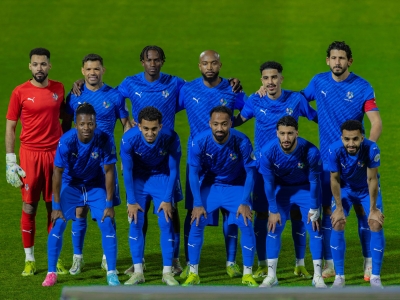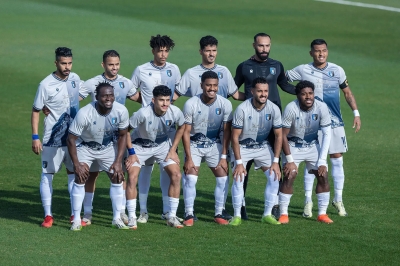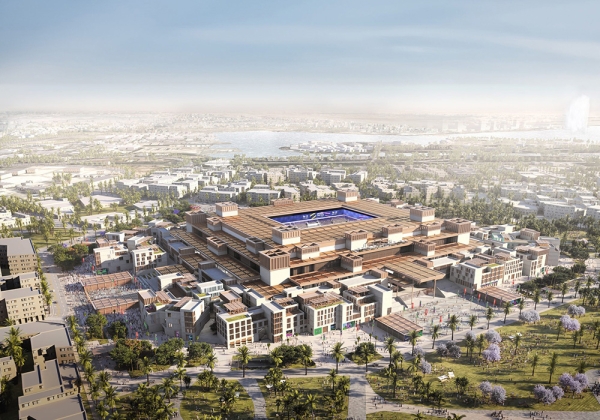
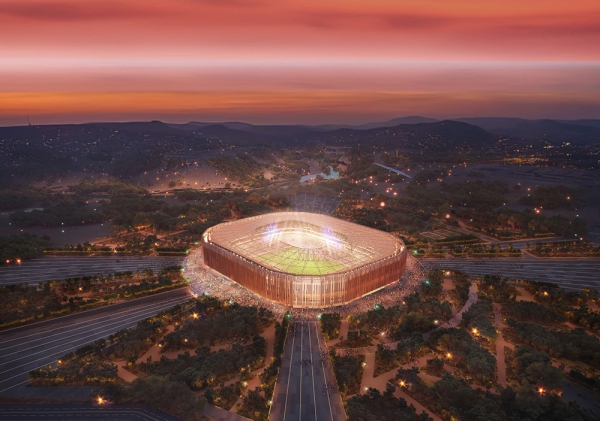
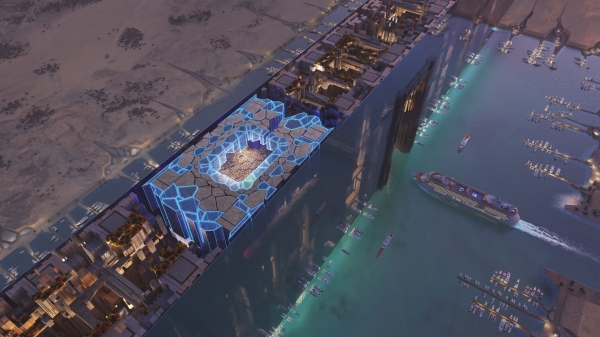
The 2034 FIFA World Cup Stadiums are fifteen international stadiums with world-class specifications in five cities in the Kingdom of Saudi Arabia, which are: Riyadh, Jeddah, Khobar, Abha, and Neom. The stadiums are distributed across the five cities as follows: Riyadh with eight stadiums, Jeddah with four stadiums, and one stadium in each of Khobar, Abha, and Neom. Four existing stadiums will be developed, while work is underway to build eleven entirely new stadiums, including King Salman International Stadium, which can accommodate more than 92,000 spectators. This stadium is scheduled to host both the opening and final matches of the tournament and will become the new main stadium for the Saudi national team.
Stadiums Hosting the 2034 FIFA World Cup in Riyadh
Eight international stadiums with world-class standards will be located in Riyadh, designated to host the 2034 FIFA World Cup. Currently, only two stadiums exist: King Fahd Sport City and Prince Faisal bin Fahd Sport City, both undergoing development. Additionally, six new stadiums will be constructed before the tournament begins. The stadiums are as follows:
King Salman International Stadium
This newly designed stadium will boast the highest capacity in the Kingdom and is set to become one of the world’s premier sports centers and the main stadium for the Saudi national team. The stadium and its surrounding area will be a cornerstone of the Green Riyadh Project, contributing to the city’s ongoing development. As one of the world's largest sports stadiums, its design draws inspiration from local architecture. With a seating capacity of 92,000 and encompassing an area of 660,000 m2 including sport facilities, it is scheduled for completion in the fourth quarter of 2029. The venue will host both the opening ceremony and the final match of the 2034 FIFA World Cup.
Location of King Salman International Stadium
The stadium is situated in northern Riyadh, along King Salman Road, adjacent to King Abdulaziz Park. Its strategic location offers proximity to key city landmarks, such as King Khalid International Airport, and connects to the Riyadh Metro Station and major road networks, ensuring easy access from all parts of the city.
Design of King Salman International Stadium
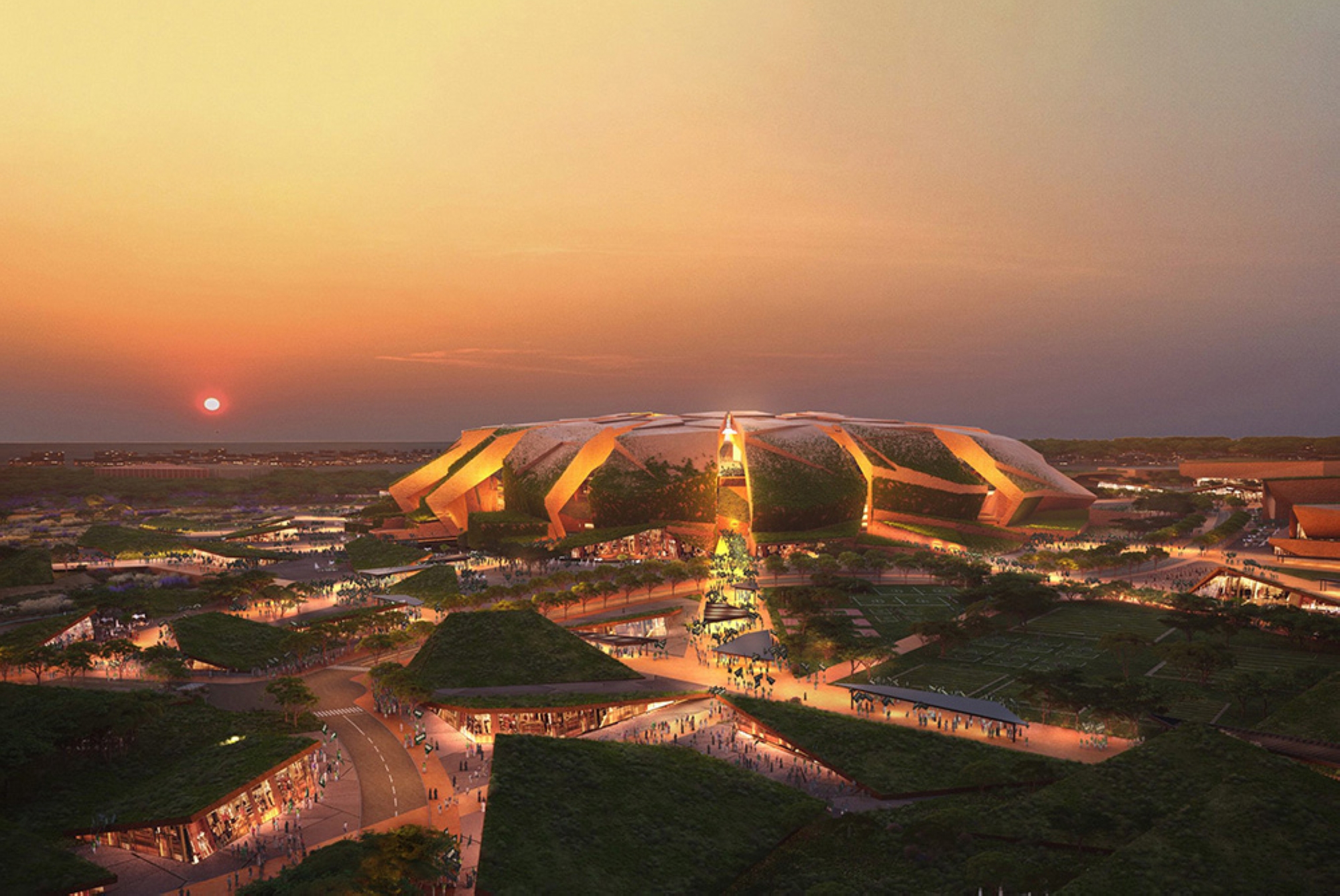
The design for King Salman International Stadium and its associated sport facilities was chosen from proposals by six leading global design firms. The final plan, inspired by the concept of “mountainous terrain,” seamlessly integrates with King Abdulaziz Park through a connecting valley and surrounding green spaces. The architectural design includes green walls and roofs spanning over 96,500 m2, reflecting local architecture while meeting the requirements for environmental sustainability and green buildings. The stadium will serve as a globally iconic venue for hosting major local and international entertainment events. It will also enhance the quality of life in Riyadh and elevate the city's global ranking, positioning it among the “world’s most livable cities.”
Features of King Salman International Stadium
King Salman International Stadium includes a variety of facilities for engaging in different sport activities, alongside several commercial centers and recreational areas accessible to all age groups throughout the day, making it an attractive destination for visitors from within and outside the Kingdom. The seating areas include a royal suite with a capacity of 150 seats, 120 hospitality suites, 300 seats for VIPs, and 2,200 seats for distinguished guests. The stadium also features sustainable cooling systems for spectator seating and the pitch. Additionally, it is equipped with internal extended screens for fans, indoor gardens, and a walking track on the stadium's roof that overlooks King Abdulaziz Park.
Facilities of King Salman International Stadium
The master plan of King Salman International Stadium encompasses several sports facilities surrounding the main stadium, covering an area exceeding 360,000 m². Among the most prominent facilities are two secondary training fields, fan zones, an indoor sports hall, an Olympic swimming pool, and an athletics track. Outdoor facilities also include courts for volleyball, basketball, and padel, allowing the practice of various sport activities. These facilities are interconnected by a 9-km-long sports trail encircling King Abdulaziz Park.
Contributions of King Salman International Stadium
King Salman International Stadium and its associated sports facilities contribute to promoting sport activities within the community, fostering a generation that embraces a healthy lifestyle, competes regionally and globally, and excels in various sport fields. The stadium provides the necessary infrastructure to align with the development goals of sport under Saudi Vision 2030. Moreover, the stadium will contribute to hosting major global and entertainment events, including the 2034 FIFA World Cup, and in creating diverse investment opportunities, thereby bolstering local economy and investment.
Information About King Salman International Stadium
- Current Status: Planning phase.
- Expected Completion Date: 2029.
- Total Capacity: 92,760 spectators.
- 2034 FIFA World Cup Stages to be Hosted: Opening Match, Group Stage, Round of 32, Round of 16, Quarter-Finals, Semi-Finals, and the Final Match.
King Fahd Sport City Stadium
King Fahd Sport City Stadium is one of the most prominent stadiums in the region, distinguished by its roof design inspired by the traditional Arabian tent. The stadium is located near key city destinations, such as the Sports Boulevard project, which will provide easy access to green spaces. The stadium’s renovation project will significantly increase its seating capacity and expand its utility for various events, from football matches to musical concerts. It is a multi-purpose sports venue in the Kingdom, hosting matches and sports events under the supervision of the Ministry of Sport. Opened during the reign of King Fahd bin Abdulaziz Al Saud in 1988, it is situated northeast of the capital, Riyadh, specifically on Prince Bandar bin Abdulaziz Road in the Al-Maizilah district.
Changing the Name to King Fahd Sport City
In November 2023, the Ministry of Sport announced the renaming of King Fahd International Stadium to King Fahd Sport City in Riyadh. This step aligns with the ministry’s strategies to develop sports facilities across the Kingdom’s cities and provinces, supporting the goals outlined in the Saudi bid to host the AFC Asian Cup 2027 and the 2034 FIFA World Cup. The renaming reflects efforts to achieve the sport objectives of Saudi Vision 2030.
Area of the Stadium of King Fahd Sport City
The stadium covers a total area of approximately 500,000 m², with a seating capacity of 58,398 seats, including 7,500 family seats, and 1,545 VIP seats, making it the second-largest stadium in the Kingdom in terms of seating capacity. The stadium features a natural grass pitch, a running track, and partially shaded stands adorned in blue.
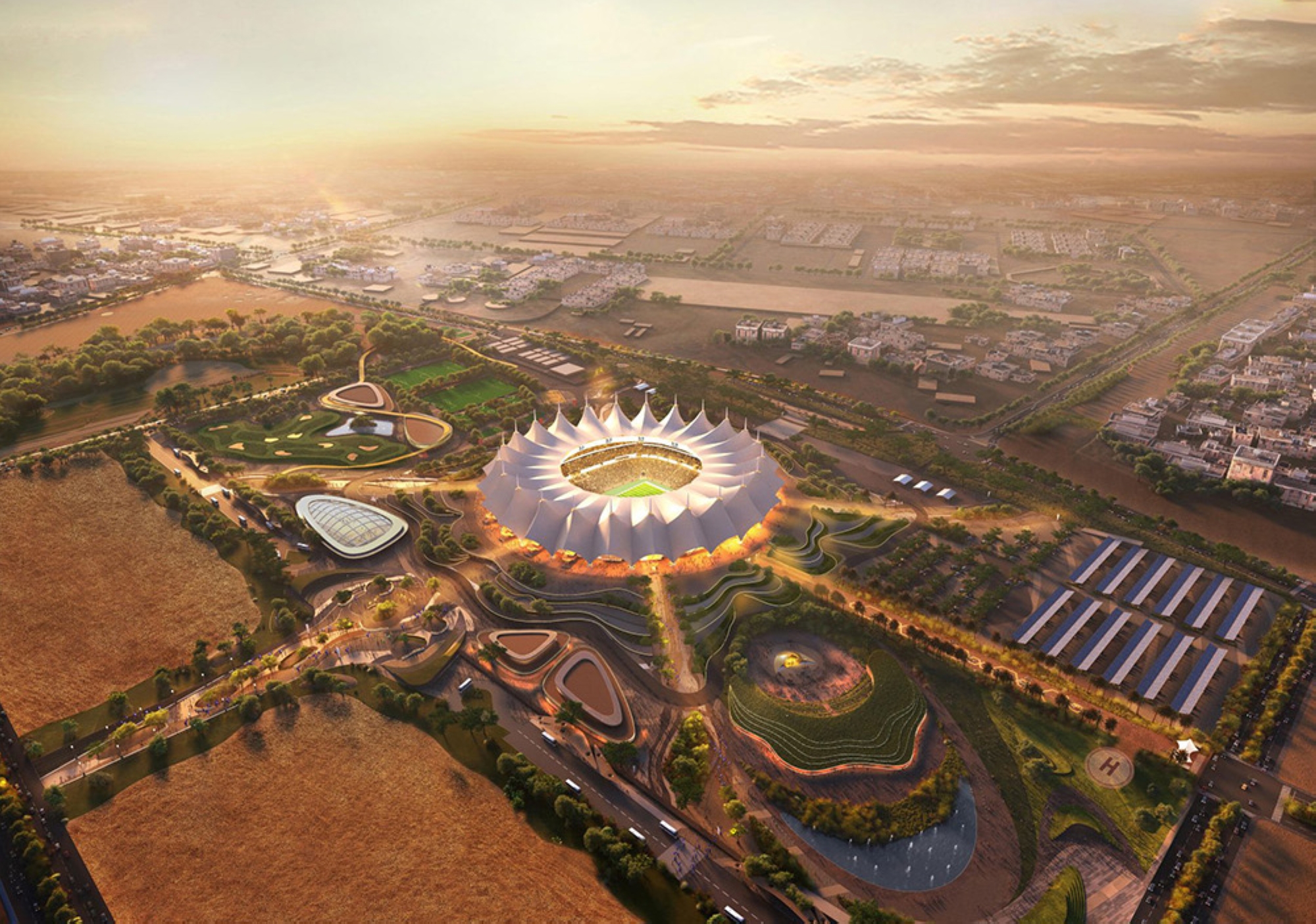
Facilities of King Fahd Sport City Stadium
A number of facilities and structures are available around the stadium, including: the players’ building, the grass football pitch and its service annexes, the running track and athletics area, the protective canal, the stands and spectator seating, special seating platforms for people with disabilities, ticket sale windows, the indoor sports hall for games such as handball, basketball, volleyball, judo, karate, and other sports, as well as the mosque, outdoor parks, gardens, and parking areas.
Uses of King Fahd Sport City Stadium
The King Fahd Sport City stadium is usually used for football matches and is known among fans by several names, including "The Pearl of Stadiums," "The Tent Stadium," and "The Pearl of the Future," due to its design inspired by traditional Arabic tents. It is also used for official celebrations, and sport and cultural competition programs. The stadium can be accessed through several main and secondary roads, including: Prince Mohammed bin Salman Road, Khurais Road, King Abdullah Road, Sheikh Isa Al Khalifa Road, Prince Bandar bin Abdulaziz Road, and Al-Janadriyah Road.
Development of King Fahd Sport City Stadium
On December, 1, 2023, the Ministry of Sport decided to close the King Fahd Sport City stadium to begin construction development work in its facilities. It is one of the stadiums that will host the 2034 FIFA World Cup finals, as well as the 2027 AFC Asian Cup. Its seating capacity will be increased to more than 70,000 seats. The development of King Fahd Sport City includes: the construction of five side football pitches, two FIFA training pitches, a football academy, running tracks, a cycling path, a sport store, a sport museum, multiple retail points, a temporary removable track, a multi-sports hall, golf courses, indoor football, and a theater/exhibition space.
Information about King Fahd Sport City Stadium
- Current Status: Existing and under renovation.
- Expected Completion Date: 2026.
- Total Capacity: 70,200 spectators.
- 2034 FIFA World Cup Stages to be Hosted: Group stage, Round of 32, Round of 16, Quarter-Finals, and the Semi-Finals.
Prince Mohammed bin Salman Stadium
It is one of the projects of Qiddiya Investment Company, named after His Royal Highness Prince Mohammed bin Salman bin Abdulaziz Al Saud, Crown Prince and Prime Minister. It is considered one of the most prominent stadiums in the world and one of the candidates to host the 2034 FIFA World Cup. The stadium will feature technologies and capabilities that have never been implemented in similar projects, and it will host sports, cultural, and artistic events.
Location of Prince Mohammed bin Salman Stadium
Prince Mohammed bin Salman Stadium is located in the heart of the economically and touristically promising Qiddiya city, 40 minutes from Riyadh, perched on one of the peaks of the Tuwaiq Mountains at an altitude of 200 m. It is distinguished by its exceptional design and modern technologies, which will attract tourists from all over the world. Spectators will experience a unique event, offering a different concept of traditional stadiums.
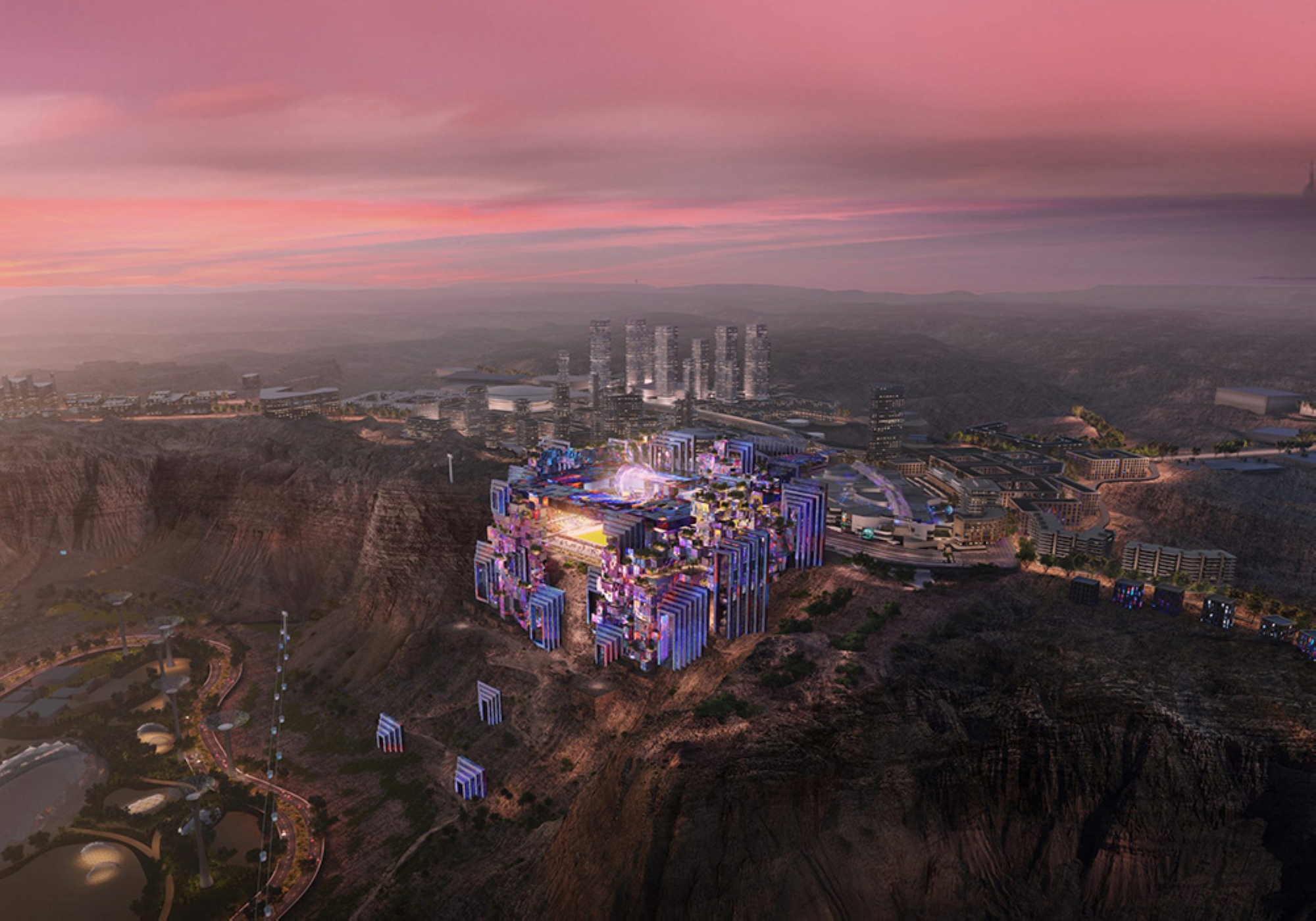
Importance of Prince Mohammed bin Salman Stadium
Prince Mohammed bin Salman Stadium is part of the urban plan for Qiddiya city and its global brand, which was announced and launched by Crown Prince Mohammed bin Salman. The city aims to become a world leader in entertainment, sports, and culture. The project is expected to contribute to achieving the goals of Saudi Vision 2030 by boosting tourism, providing job opportunities for thousands of citizens, and developing the national economy. It is also expected to increase the annual number of visitors to the Kingdom by 1.8 million football fans.
The stadium will host several local and international football competitions, and it is one of the venues shortlisted to host the 2034 FIFA World Cup, which will be held in the Kingdom. It will also be the home for the al-Hilal and al-Nassr sport clubs. The stadium will feature world-class technologies, including the ability to transform its entire pitch in just a few hours to accommodate various sports and entertainment events, such as rugby, boxing, mixed martial arts, large exhibitions, music concerts, and eSports tournaments.
Technologies of Prince Mohammed bin Salman Stadium
The exterior frame, some walls, and the roof of Prince Mohammed bin Salman Stadium are covered with screens that total a length of 1.5 km. Notable features of the stadium include retractable and foldable floors, roofs, and upper walls, offering visitors a view of the lower part of Qiddiya city. The stadium also includes advanced climate control technology, allowing events to take place throughout the year without interruption and minimizing energy consumption. Beneath the stadium, there is an environmentally friendly cooling lake that pumps rainwater collected from the stadium into a snow wall, which cools the air entering the central air conditioning system.
Information about Prince Mohammed bin Salman Stadium
- Current Status: Planning Stage.
- Expected Completion Date: 2029.
- Total Capacity: 46,979 Spectators.
- 2034 FIFA World Cup Stages to be Hosted: Group stage, Round of 32, Round of 16, and Third-Place Match.
Prince Faisal bin Fahd Sport City Stadium
The current stadium is set to be replaced by a new stadium as part of a master plan that includes several parks and green spaces in the surrounding area. The construction will use locally sourced materials, and a massive array of solar panels will be installed on the stadium's roof, which will be surrounded by multipurpose green spaces. The stadium is located in the heart of a vibrant area that serves as a distinctive destination for the local community. It is overseen by the Ministry of Sport and is one of the oldest stadiums in the Kingdom, having been established during the reign of King Faisal bin Abdulaziz Al Saud in 1971. The stadium is a comprehensive complex for various sport activities, and its total area spans approximately 120,000 m2.
Facilities of Prince Faisal bin Fahd Sports City Stadium
Around Prince Faisal bin Fahd Sport City Stadium, there are several facilities and buildings, including: the auxiliary grass football pitch, a covered gymnastics hall, the Royal Hall building, the Saudi national football team camp building, the Saudi Billiard and Snooker Federation building, the Special Needs Federation building, the open-air grandstands and its facilities, the players' rooms, the referees' club, the bodybuilding and weightlifting hall, and outdoor areas, gardens, and parking lots. The stadium is primarily used for football matches and is widely known among the public by several names, including "Al-Malaz Stadium," named after the district in which it is located. It is also used for official celebrations, as well as sport and cultural competitions.
Development of Prince Faisal bin Fahd Sport City Stadium
The General Sport Authority (before it became the Ministry of Sport) has redeveloped Prince Faisal bin Fahd Sport City Stadium. The first phase of renovation and rehabilitation was completed in 2019, which included resurfacing the parking lots and internal roads of the stadium, replacing old street lighting on internal roads, improving the reception area, entrances for players and referees, and upgrading the old player exit tunnels and expanding them. The old field surface was entirely replaced with a new one, covering an area of 8,000 square meters. The entire old track was removed and replaced with a new one, and the water and electricity pipes along the 9,000 m2 track were re-laid.
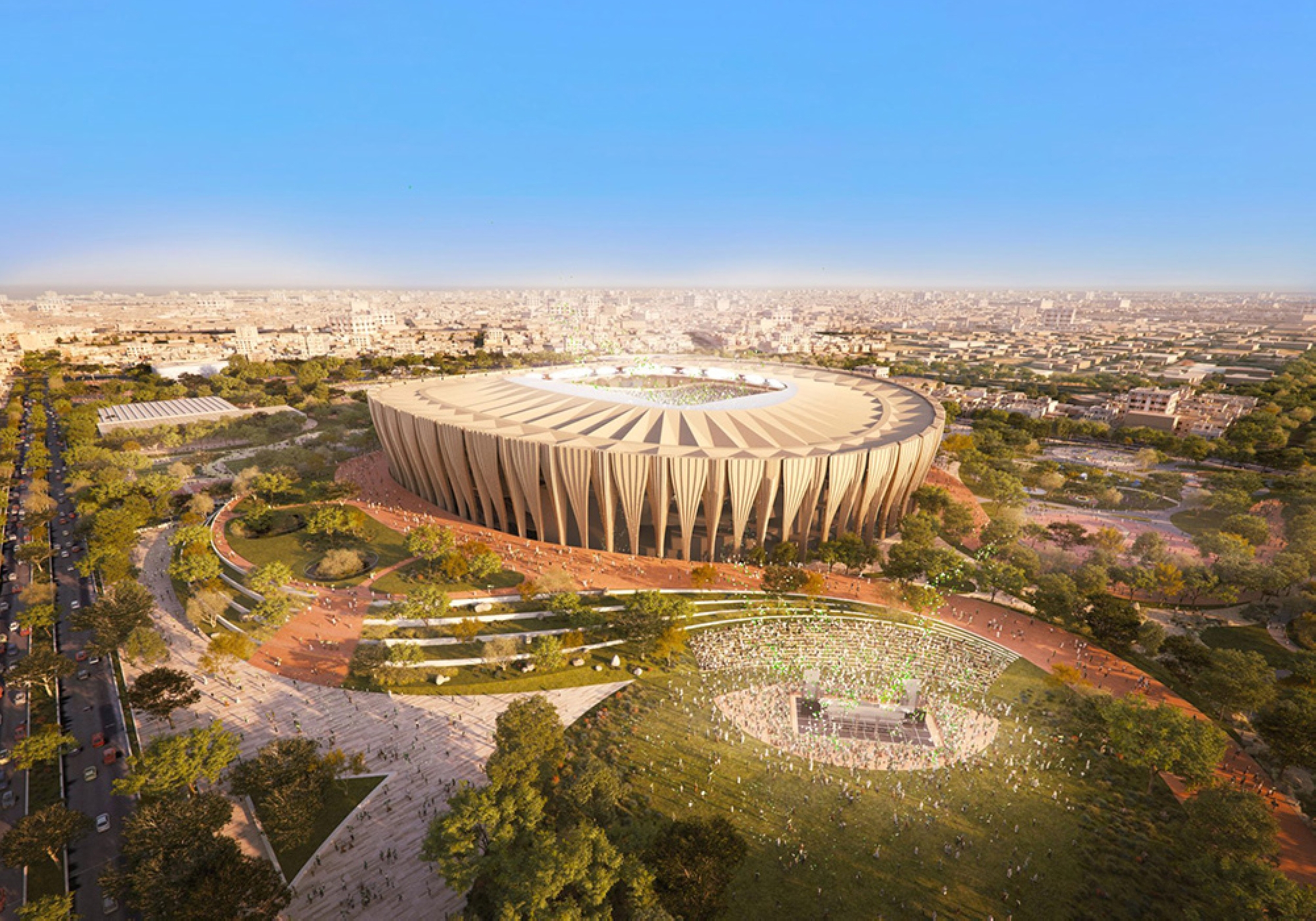
Changing the name to Prince Faisal bin Fahd Sport City
On November 19, 2023, the Ministry of Sport announced the renaming of Prince Faisal bin Fahd Stadium to Prince Faisal bin Fahd Sport City, as part of the developmental steps the Ministry is implementing according to comprehensive plans that contribute to achieving the sport targets of Saudi Vision 2030. The sport city will include the main and auxiliary stadiums, a sports team camp building with a hotel, an indoor sport hall, as well as a comprehensive administrative building.
Information about Prince Faisal bin Fahd Sport City
- Current Status: Ongoing Construction.
- Expected Completion Date: 2027.
- Total Capacity: 46,865 Spectators.
- 2034 FIFA World Cup Stages to be Hosted: Group stage, and Round of 32.
Roshn Stadium
It is located southwest of the capital, Riyadh, with a seating capacity of 45,000 seats and a total area of over 450,000 m2.
Roshn Stadium Design
Roshn Stadium features a versatile design that includes a variety of stores, restaurants, and hospitality areas. At the heart of the project is a main stadium designed for sports events and activities, with seamless connections between its various facilities within an open, interconnected design. The stadium has a striking crystalline design, with its edges rising to create a beautiful touch to the skyline of the surrounding area. It is inspired by the urban fabric and architectural features of the central region of the Kingdom. Visitors to the stadium can access surrounding sports facilities such as pedestrian pathways and public green spaces, making it a vibrant destination.
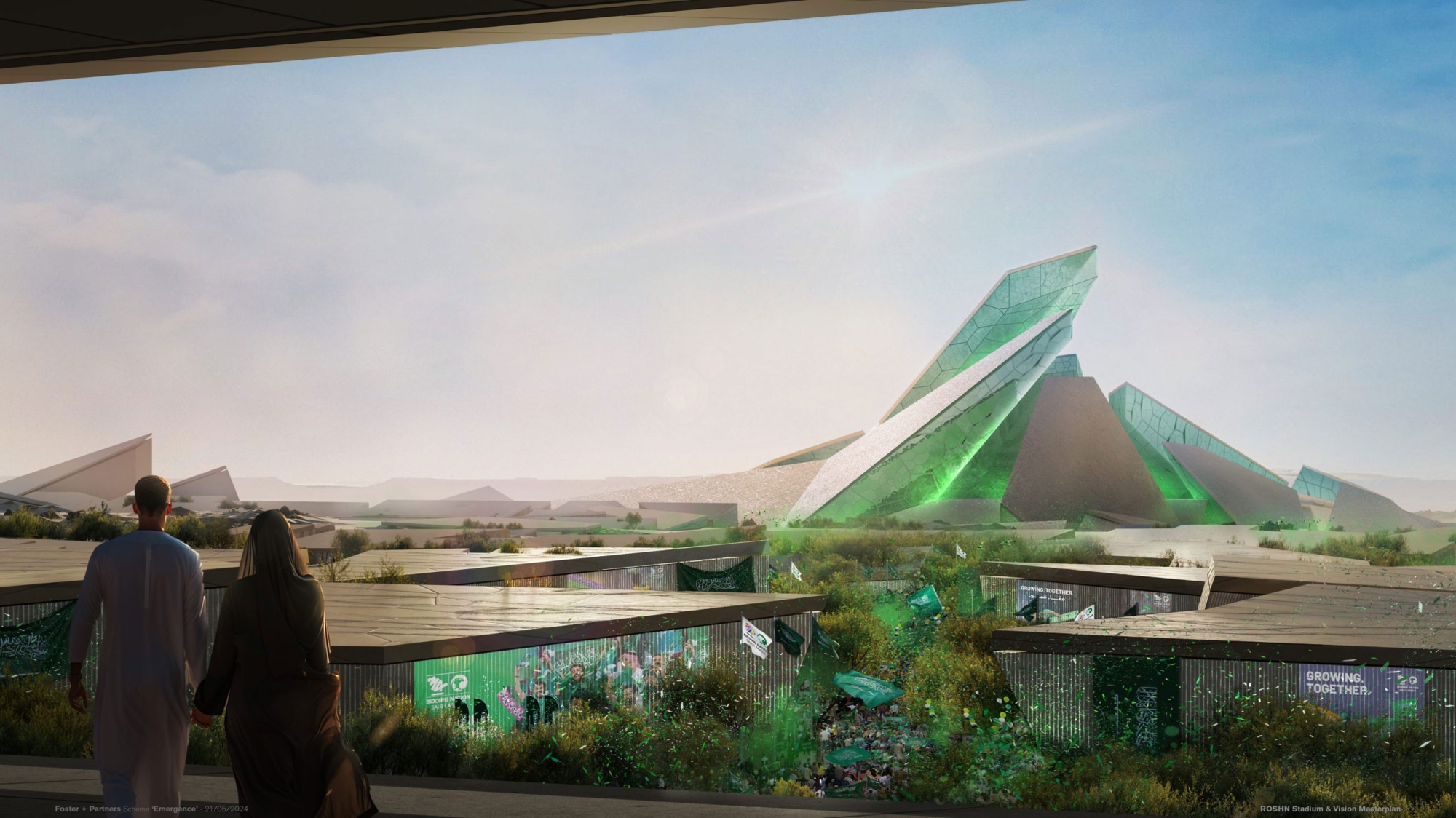
Roshn Stadium Features
Roshn Stadium is designed to meet the requirements for hosting prominent global sports events. It is one of the stadiums in Riyadh that will host the 2034 FIFA World Cup, in addition to hosting other entertainment, cultural, and social events. The stadium will utilize cutting-edge technologies, such as solar energy, which will be integrated into its infrastructure. The design of the stadium’s roof will enhance air circulation, ensuring adequate ventilation, and also control the amount of sunlight entering the stadium during the day.
The stadium project embodies the strategic direction of this initiative, which will contribute to improving the quality of life and providing a unique experience for the residents of Riyadh. It will also enhance the Kingdom's appeal to host international competitions, in line with Saudi Vision 2030, by supporting economic growth and raising the quality of life in the Kingdom.
Information about Roshen Stadium
- Current Status: Planning phase.
- Expected Completion Date: 2032.
- Total Capacity: 46,000 Spectators.
- 2034 FIFA World Cup Stages to be Hosted: Group stage, and Round of 32.
New Murabba Stadium
It is one of the sport and entertainment facilities and a key component of the "New Murabba" destination currently being developed in Riyadh.
Design of the New Murabba Stadium
On July 16, 2024, the New Murabba Development Company, a subsidiary of the Public Investment Fund (PIF), announced the design of the "
Features of the New Murabba Stadium
The stadium’s design combines innovative modern architecture and elements of sustainability that define the New Murabba. With versatile spaces, the stadium will host a wide range of events, including sporting activities, entertainment occasions, gaming competitions, exhibitions, and educational events. It is also one of the stadiums shortlisted to host the 2034 FIFA World Cup, among other events. The design includes advanced technologies to ensure a unique experience for fans and event participants.
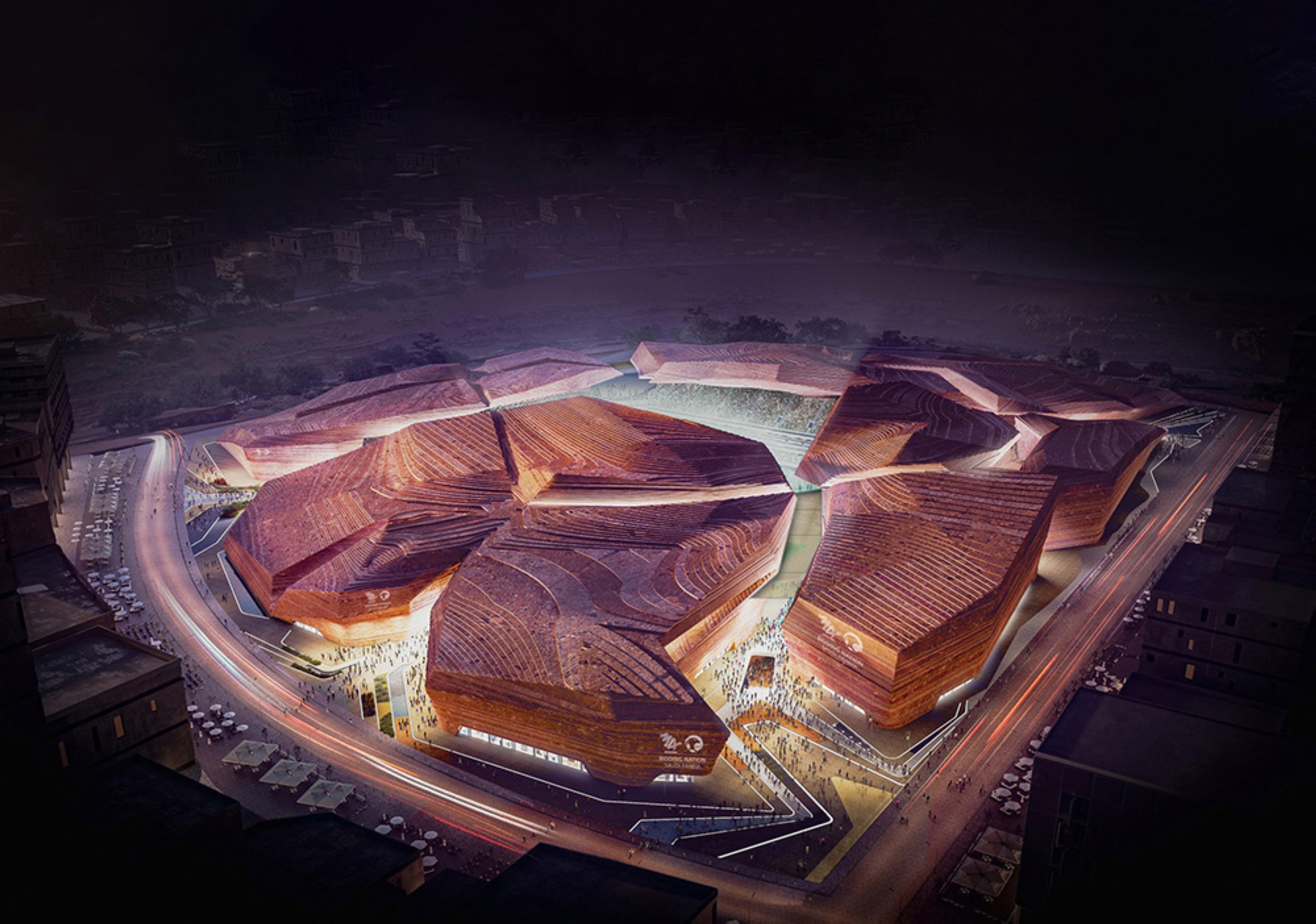
Information about New Square Stadium
- Current Status: Planning Stage.
- Expected Completion Date: 2032.
- Total Capacity: 46,010 Spectators.
- 2034 FIFA World Cup Stages to be Hosted: Group Stage, and Round of 32.
South Riyadh Stadium
The new stadium draws its design from the principles of Salmani architecture, blending the spirit of heritage and tradition with modernity. The stadium is planned to become the main venue for one of the football clubs and will host a wide range of sports and entertainment events after the conclusion of the World Cup competitions. The surrounding area of the stadium will contribute to enhancing community engagement activities, making the stadium a preferred destination for future generations.
Information about South Riyadh Stadium
- Current Status: Planning Stage.
- Expected Completion Date: 2032.
- Total Capacity: 47,060 Spectators.
- 2034 FIFA World Cup Stages to be Hosted: Group Stage, and Round of 32.
King Saud University Stadium
This stadium is located in a prime area next to the 'U Walk' complex and is one of the most important mixed-use projects affiliated with King Saud University. The stadium currently hosts Saudi Pro League matches and other major sport events, and its capacity is planned to be expanded to host additional tournament matches. It is overseen by King Saud University, which is responsible for its management, and it was designed according to the latest international standards.
Establishment of King Saud University Stadium
King Abdullah Bin Abdulaziz Al Saud laid the foundation stone for King Saud University Stadium, and its construction was completed during the reign of King Salman Bin Abdulaziz Al Saud. It is located in the King Saud University campus.
The current seating capacity of King Saud University Stadium is approximately 25,000 seats, with 34 gates for the public, five television and radio broadcasting rooms, in addition to seats and elevators for people with disabilities. The stadium consists of a natural grass pitch and partially shaded stands, making it the first stadium in Riyadh without a running track, and the second in the Kingdom after King Abdullah International Stadium. This design allows fans to watch and interact with the matches up close.
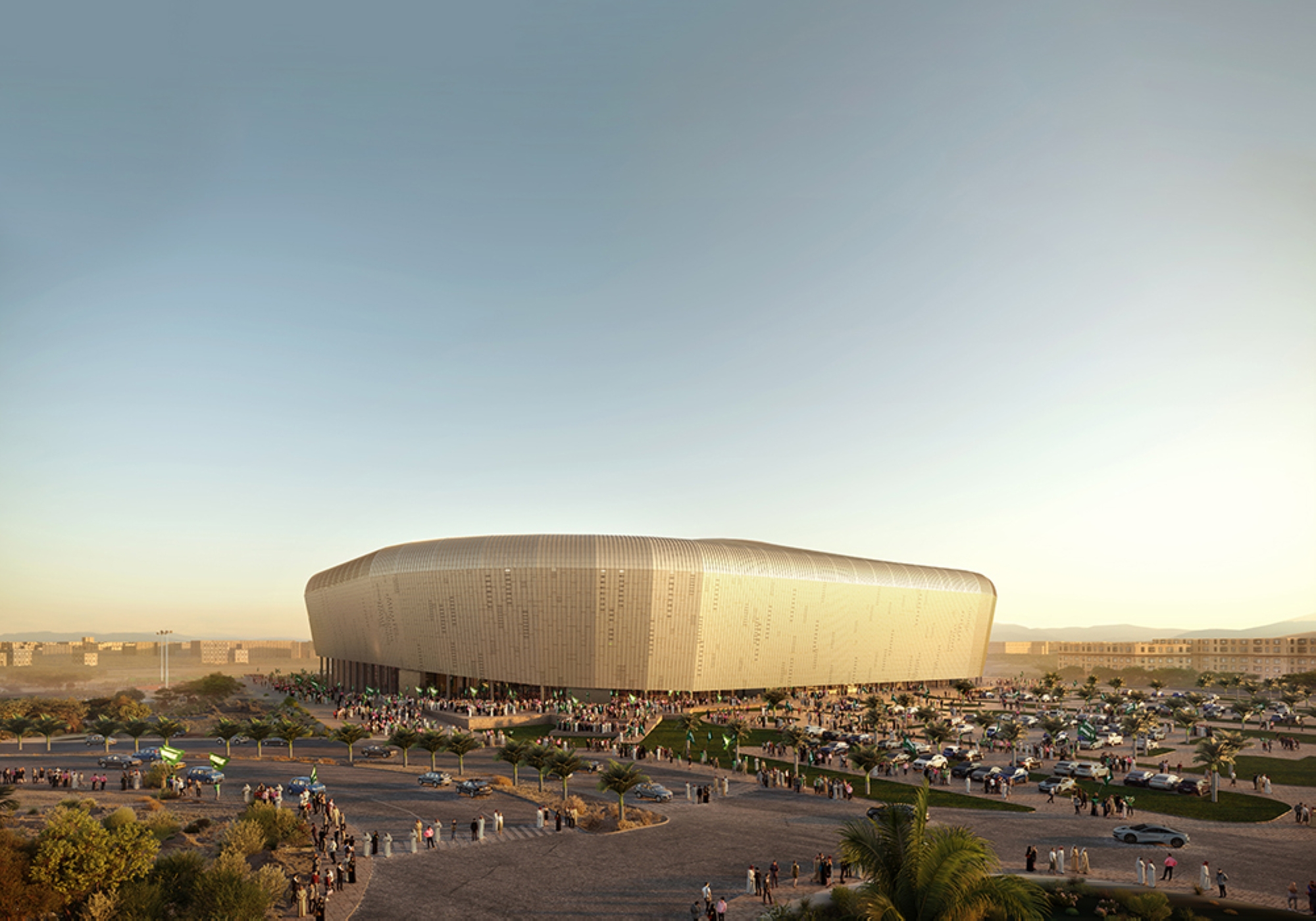
Facilities and Amenities at King Saud University Stadium
The stadium is equipped with a variety of facilities and amenities, including: medical rooms, warm-up halls, fitness centers, players' rooms, referees' rooms, coaches' rooms, a doping testing room, a meeting hall, a press conference room, television broadcasting rooms, prayer rooms, ticket shops, restaurants, parking lots, and outdoor areas.
The stadium is typically used for football matches and is known by several names among the fans, including "The Horror Zone," "Mrsool Park," and "Al-Awwal Park." It also hosts official events, sports and cultural competitions, and more.
Information about King Saud University Stadium
- Current Status: Operational, Under Renovation.
- Expected Completion Date: 2032.
- Total Capacity: 46,319 Spectators.
- 2034 FIFA World Cup Stages to be Hosted: Group Stage, and Round of 32.
Stadiums Hosting the 2034 FIFA World Cup in Jeddah
Four international stadiums with world-class specifications will be built in Jeddah to host the 2034 FIFA World Cup. One of them is already operational, which is the King Abdullah Sport City Stadium, while three new stadiums will be built before the 2034 FIFA World Cup. The stadiums are as follows:
King Abdullah Sport City Stadium in Jeddah
This stadium was built in 2014 and is nicknamed "The Shining Jewel" due to its distinctive architectural design. The planned renovation aims to meet the requirements set by FIFA while preserving its signature design elements. It is popularly known as "Al-Jawhara Stadium" or "The Shining Jewel," and is part of the King Abdullah Sport City in Jeddah. It hosts major sports events and is overseen by the Ministry of Sport.
Opening of King Abdullah Sports City Stadium
King Abdullah bin Abdulaziz Al Saud inaugurated the stadium in 2014. The stadium has a seating capacity of 62,000 seats with partially shaded stands and is located about 20 minutes from King Abdulaziz International Airport. The stadium consists of six main floors, including: the first floor, which is dedicated to maintenance and operations management and player services; the second floor, which houses stadium management, press rooms, and ticket sales outlets, as well as entrances to the royal lounge and VIP lounge; and the third floor, which serves as the main entrance for all fans to the stands and other dedicated areas.
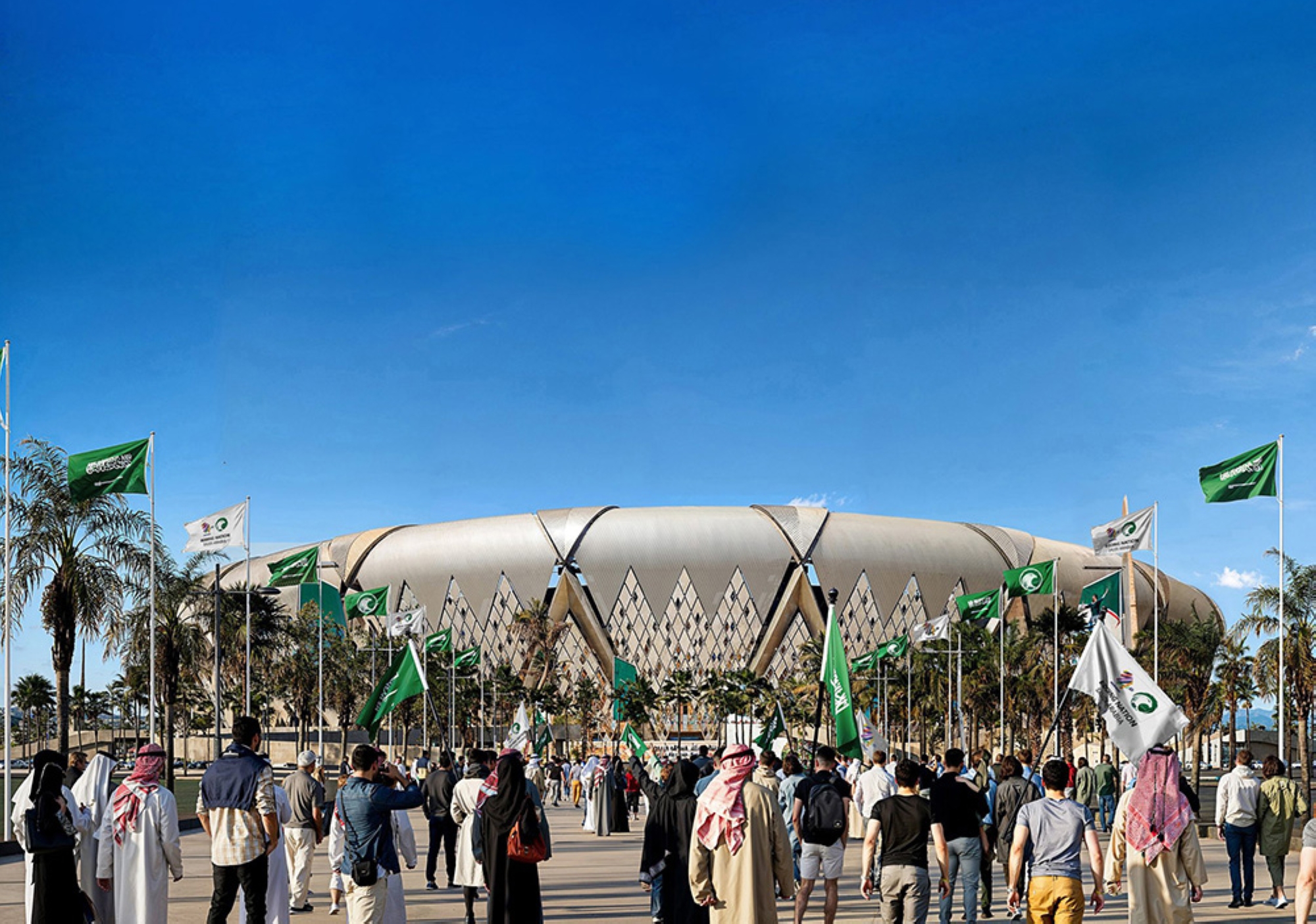
Surrounding Facilities of the Stadium
The area surrounding the stadium includes several facilities and amenities, most notably an indoor sport hall with a seating capacity of 10,000, an athletics track, five tennis courts, six additional football pitches, luxury suites and halls dedicated to VIPs, parking spaces for 45,000 cars, as well as outdoor plazas, a mosque, restaurants, and gardens.
Uses of the Stadium
The stadium is used for football matches and is also utilized for official events, major sports and cultural competitions, including hosting WWE wrestling events, the Jeddah International Chess Championship, and it will host the 2034 FIFA World Cup Finals.
Supervision of Stadium Construction
Saudi Aramco supervised the construction and design of King Abdullah Sport City Stadium. The stadium’s general design is inspired by the shape of a jewel, with detailed elements drawn from the historic heritage of Jeddah, resembling the "mashrabiyas" or "rawashin," which are traditional wooden window features used for decoration in the facades of buildings in historic Jeddah and other areas.
In 2013, the Ministry of Transport and Logistic Services began extending road networks within and around King Abdullah Sport City, providing multiple access points to the stadium, such as through al-Madinah al-Munawwarah Road and al-Haramain Road. A total of 14 concrete bridges have been constructed within the city, in addition to four wadi bridges.
Information about King Abdullah Sport City Stadium
- Current Status: Operational, Under Renovation.
- Expected Completion Date: 2032.
- Total Capacity: 58,432 Spectators.
- 2034 FIFA World Cup Stages to be Hosted: Group Stage, Round of 32, Round of 16, and Quarter-Finals.
King Abdullah Economic City Stadium
This new stadium is set to be built in King Abdullah Economic City on the Red Sea coast. The stadium features a multi-purpose design with aesthetic touches inspired by the local coral reefs. After the tournament, the stadium will be used to host football matches, musical concerts, and exhibitions, while the surrounding areas will be designated for community activities.
Information about King Abdullah Economic City Stadium
- Current Status: Planning Stage.
- Expected Completion Date: 2032.
- Total Capacity: 45,700 Spectators.
- 2034 FIFA World Cup Stages to be Hosted: Group Stage, and Round of 32.
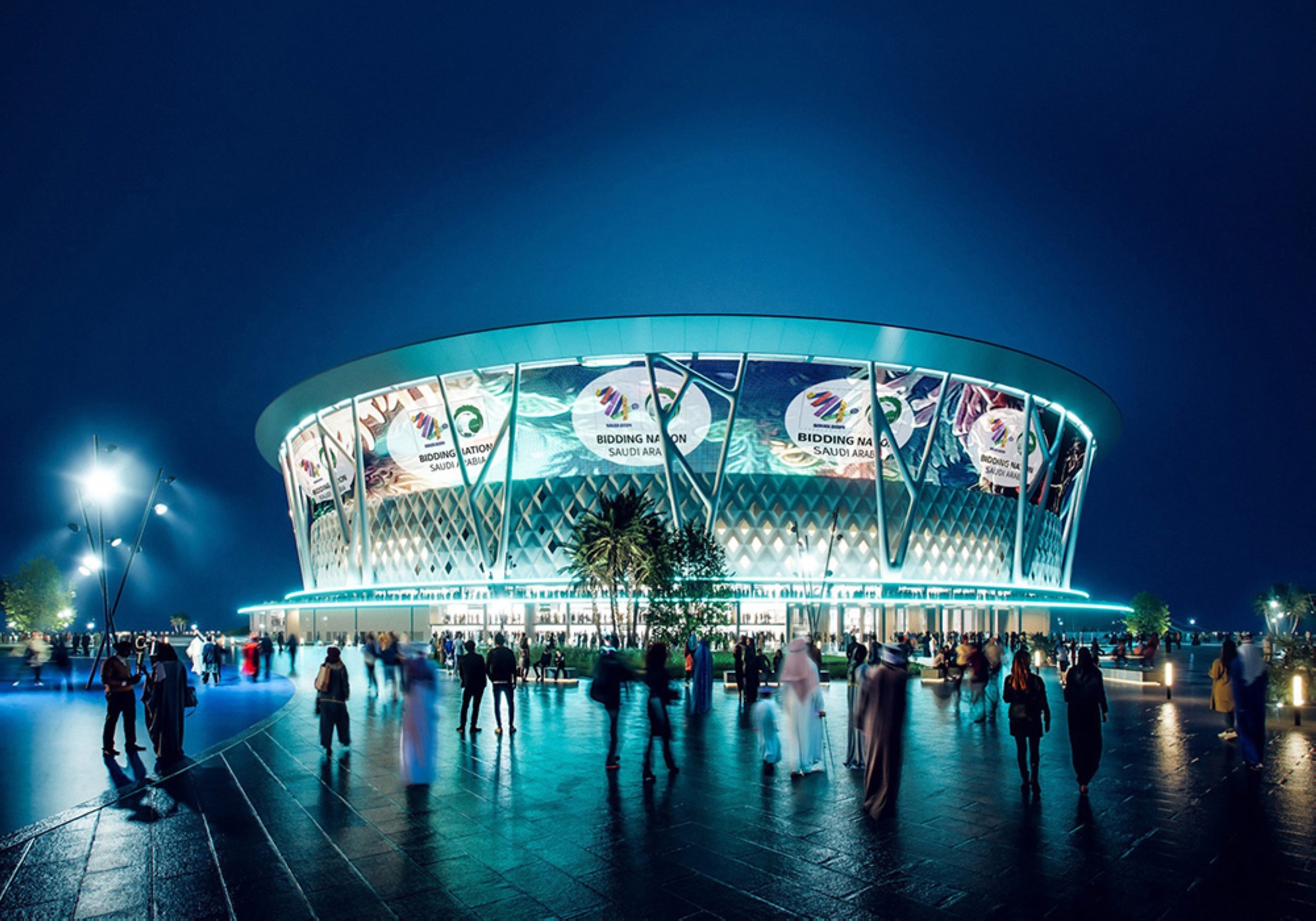
Qiddiya Coast Stadium
This new stadium will be built in the heart of the Qiddiya Coast project on the shores of the Red Sea, alongside several other sports facilities and hotels. The design of the stadium is inspired by the flowing appearance of "Mexican waves," with rich and vibrant color gradients. After the tournament, this stadium will be converted into a multi-purpose entertainment center.
Information about Qiddiya Coast Stadium
- Current Status: Planning stage.
- Expected Completion Date: 2032.
- Total Capacity: 46,069 Spectators.
- 2034 FIFA World Cup Stages to be Hosted: Group Stage, Round of 32, and Round of 16.
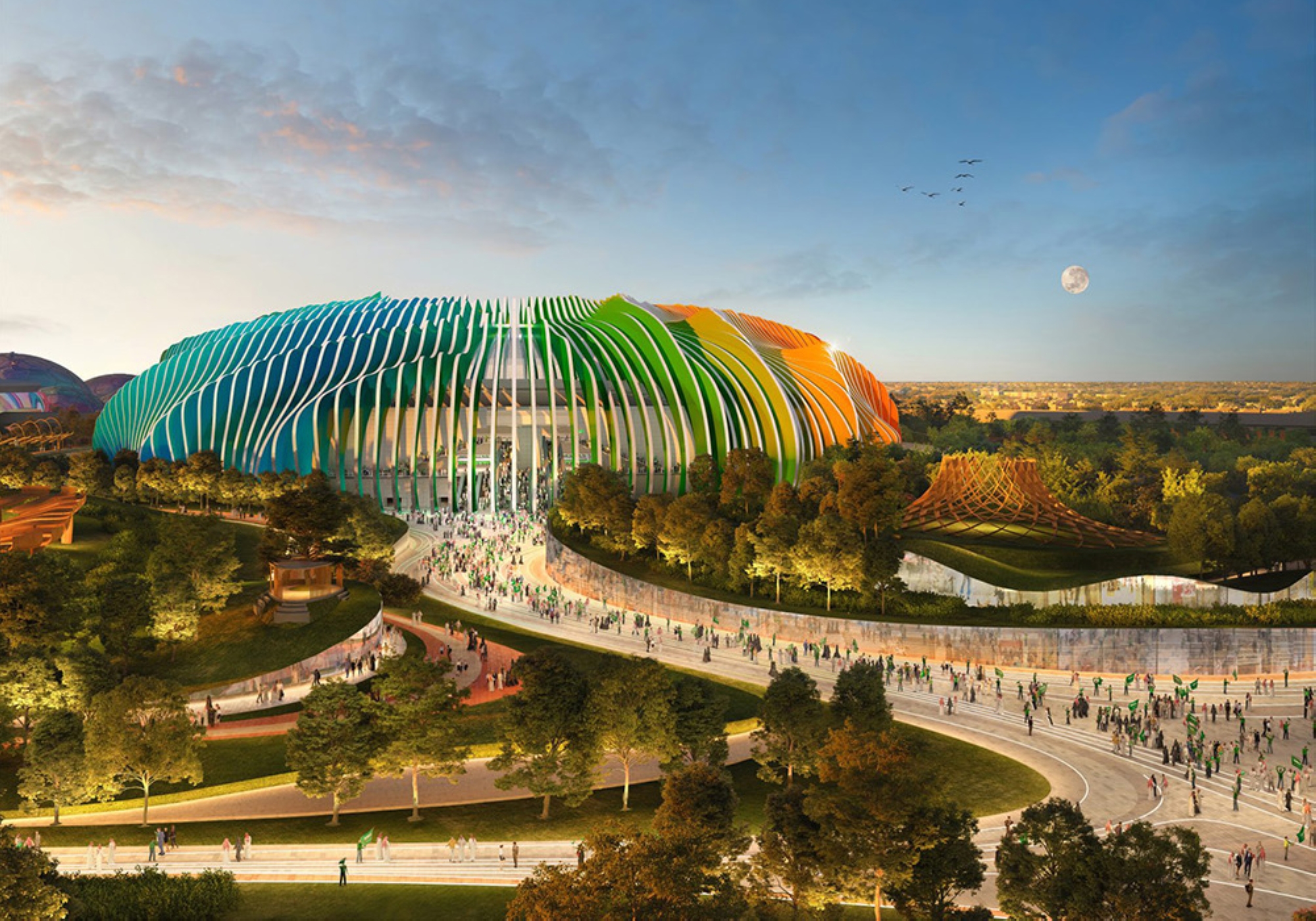
Central Jeddah Stadium
The design of the stadium mirrors the distinctive architectural styles of the Historic Jeddah (al-Balad) area, while embracing technological advancements and innovative building designs. The stadium will be located in the sport park area of Jeddah, surrounded by spaces dedicated to fans, entertainment, retail, education, and medical services. This stadium is expected to become the home of two professional sport clubs.
Information about Central Jeddah Stadium
- Current Status: Under Construction.
- Expected Completion Date: 2027.
- Total Capacity: 45,749 Spectators.
- 2034 FIFA World Cup Stages to be Hosted: Group Stage, and Round of 32.
Stadiums Hosting the 2034 FIFA World Cup in al-Khobar
The Saudi bid to host the 2034 FIFA World Cup designates a single stadium in al-Khobar to host the global event, which is the Aramco Stadium.
Aramco Stadium
This new stadium is located on the Arabian Gulf coast, north of al-Khobar, and features a dynamic design inspired by marine vortices. After the World Cup, Aramco Stadium will transform into the main venue for one of the professional sport clubs. It is one of the stadiums that will host the 2034 FIFA World Cup finals. Located in al-Khobar, it has a seating capacity of around 47,000 seats. The stadium is expected to be completed by 2026 and will become the main stadium for al-Qadsiah Club, owned by Saudi Aramco, as well as one of the main venues for the 2027 AFC Asian Cup, which will be hosted by the Kingdom.
Design of Aramco Stadium
The stadium's design is inspired by the shape of water vortices commonly seen on the coasts of al-Khobar. The stadium combines tradition and innovation in its form. Saudi Aramco, in collaboration with the national real estate development company Roshn (a subsidiary of the PIF), is building a football stadium that embodies the latest global technologies and integrated cooling systems to provide an ideal environment for spectators. This architectural masterpiece will enhance the Kingdom’s position as the host of the 2027 AFC Asian Cup and is expected to become a key venue for major sports and entertainment events, as well as a leading destination in the Eastern Province. It will include VIP sections, facilities designed to meet community and special needs.
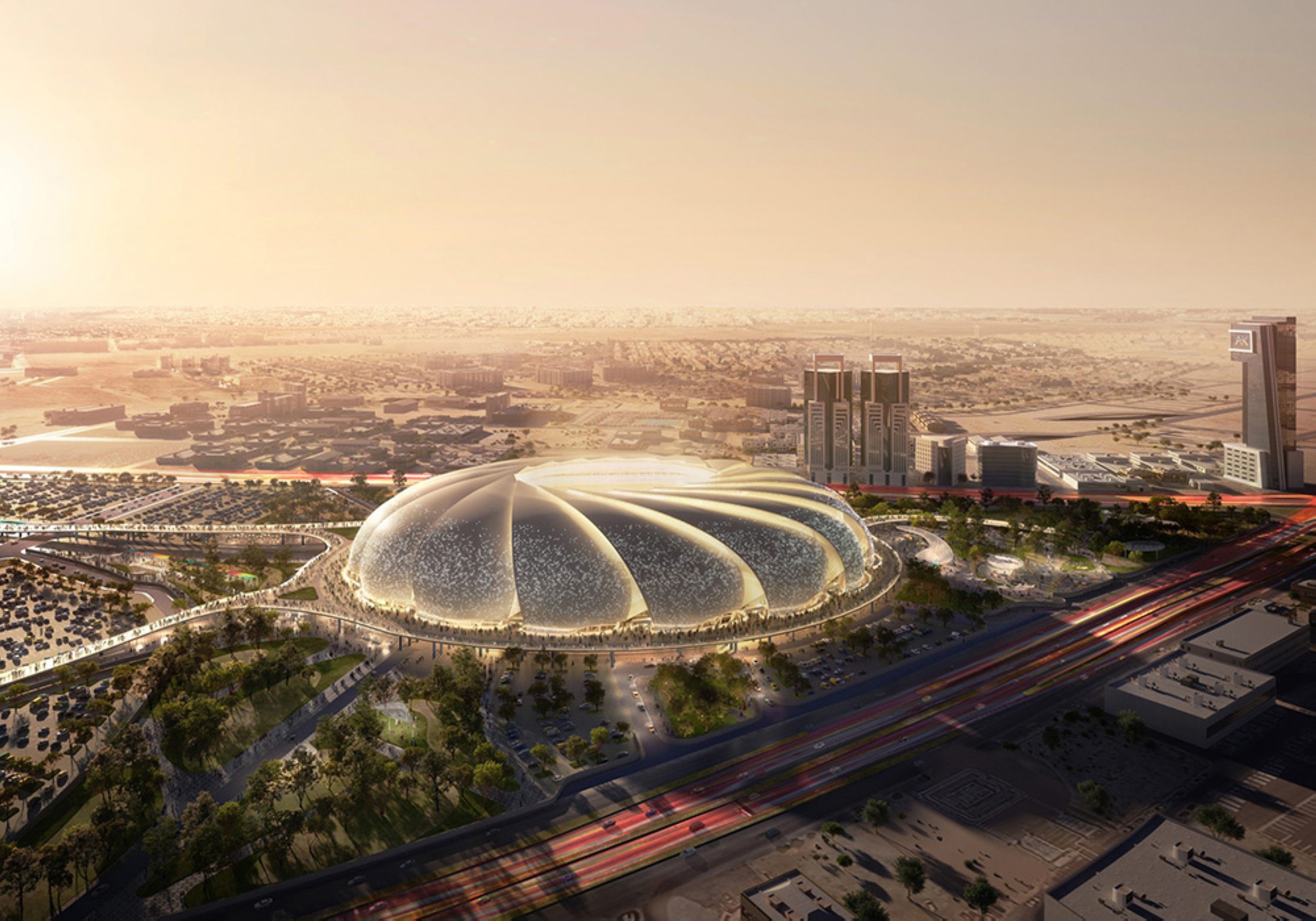
Role of Aramco Stadium
The Aramco Stadium project highlights Saudi Aramco's role in the community and its investment in social development initiatives. The stadium will serve as a hub for national and international sports, entertainment, and community events in the Eastern Province. This project aims to develop health programs, encourage participation in sports, expand community engagement, and contribute to social development.
Information about Aramco Stadium
- Current Status: Under Construction.
- Expected Completion Date: 2026.
- Total Capacity: 46,096 Spectators.
- 2034 FIFA World Cup Stages to be Hosted: Group Stage, Round of 32, and Round of 16.
Stadiums Hosting the 2034 FIFA World Cup in Abha
The Saudi bid to host the 2034 FIFA World Cup also designates a single stadium in Abha for the global event. That is King Khalid University Stadium.
King Khalid University Stadium
Located in the southeastern part of Abha, the King Khalid University Stadium is set to undergo expansion to increase its seating capacity to over 45,000 spectators in preparation for the 2034 FIFA World Cup. The renovation will focus on modernizing infrastructure while respecting the stadium's historical context. After the tournament, the stadium will host one of the professional sport clubs and be available for use by the university and the local community.
Information about King Khalid University Stadium
- Current Status: Existing, Under Renovation.
- Expected Completion Date: 2032.
- Total Capacity: 45,428 Spectators.
- 2034 FIFA World Cup Stages to be Hosted: Group Stage, Round of 32, and Round of 16.
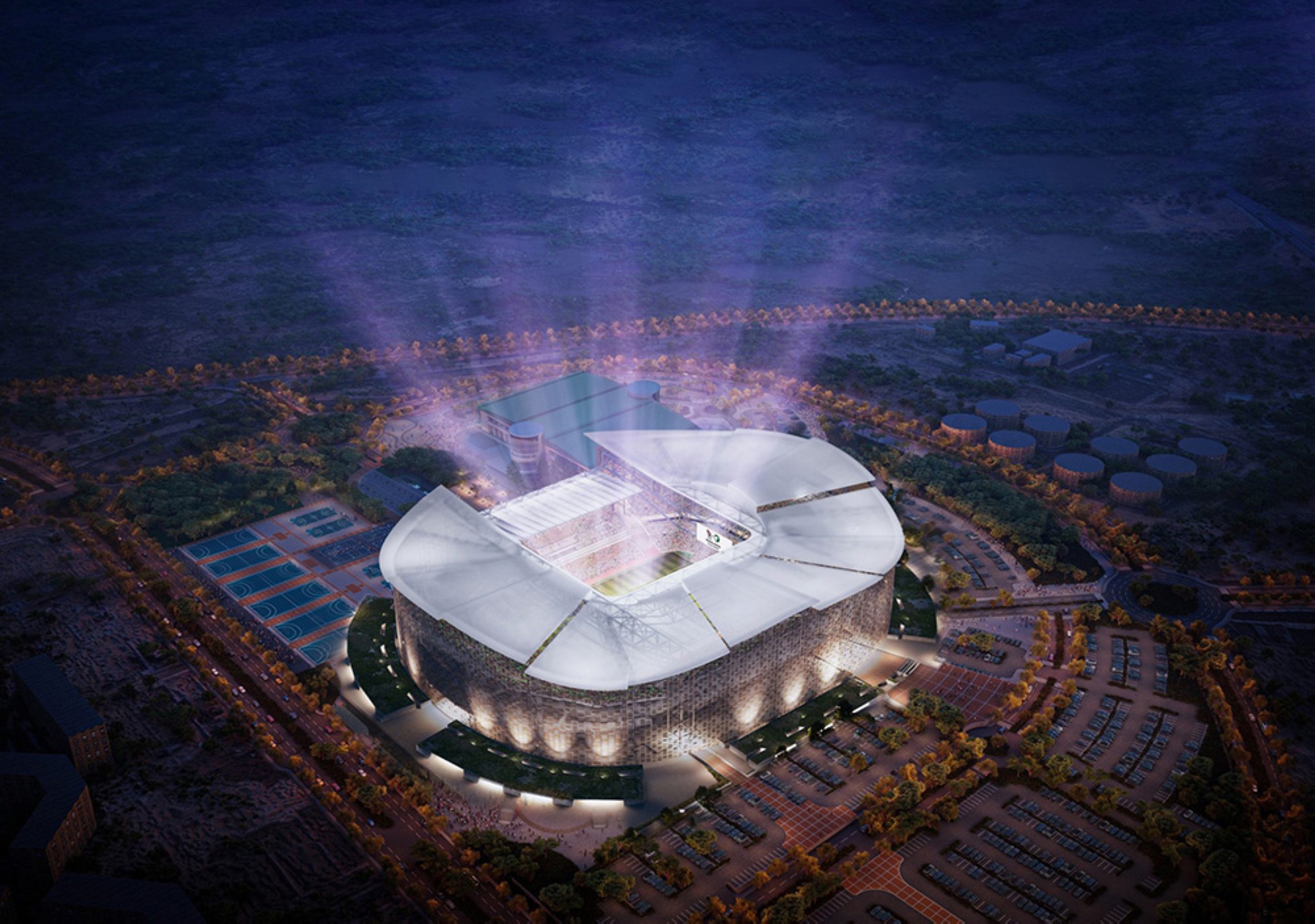
Stadiums Hosting the 2034 FIFA World Cup in Neom
The Saudi bid to host the 2034 FIFA World Cup also includes a single stadium in Neom: Neom Stadium.
Neom Stadium
Neom Stadium is set to be a groundbreaking venue, situated more than 350 m above ground level. Its roof extends as part of the city's structure, offering a unique and extraordinary experience for attending football matches. The stadium will be one of the most iconic landmarks in the world. After the conclusion of the World Cup, Neom Stadium will serve as the home stadium for one of the professional sport clubs and as a center for sport activities and lifestyle programs within the city.
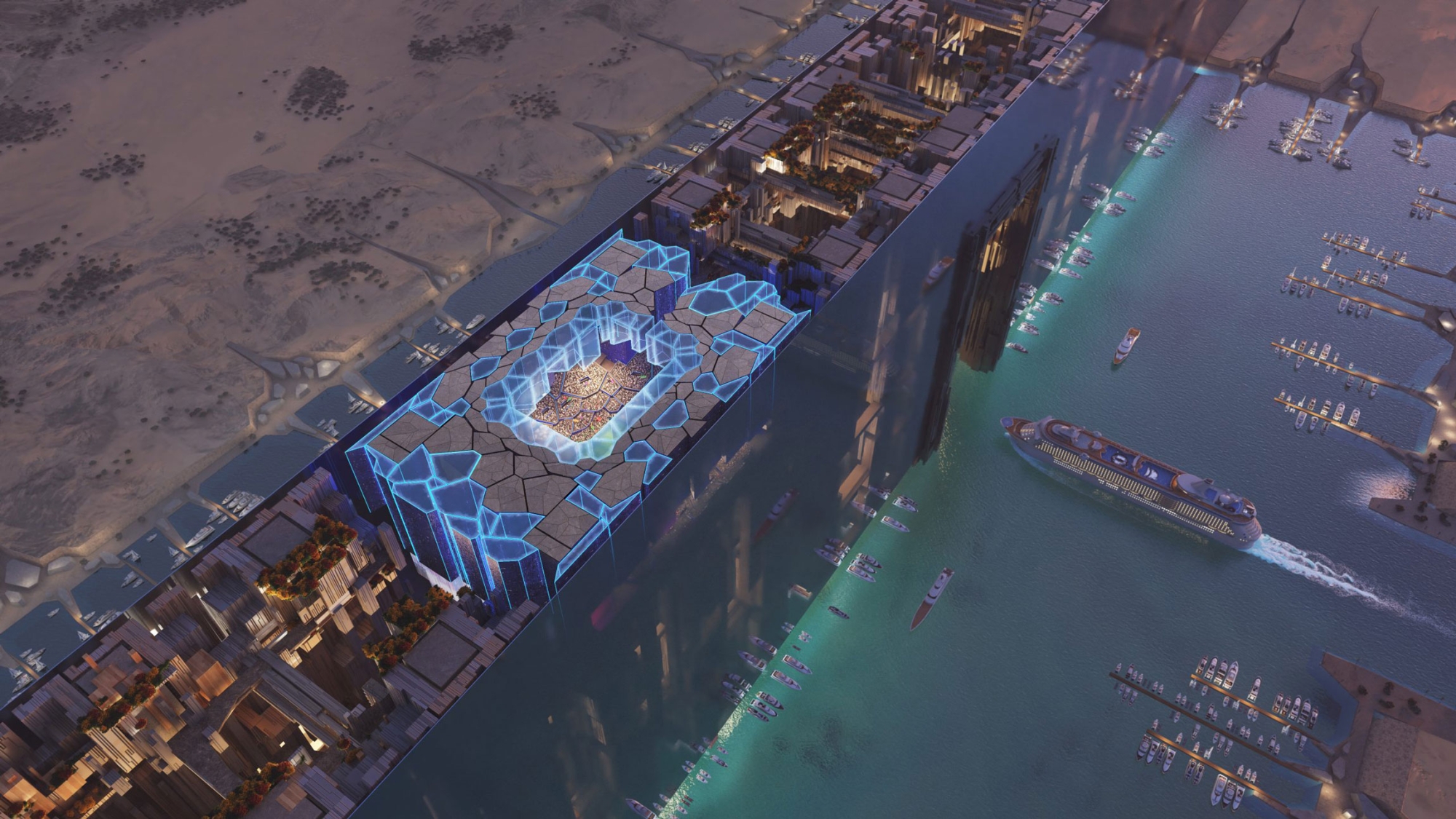
Information about Neom Stadium
- Current Status: Planning Phase.
- Expected Completion Date: 2032.
- Total Capacity: 46,010 Spectators.
- 2034 FIFA World Cup Stages to be Hosted: Group stage, Round of 32, Round of 16, and Quarter-Finals.
Related quizzes
Related articles

